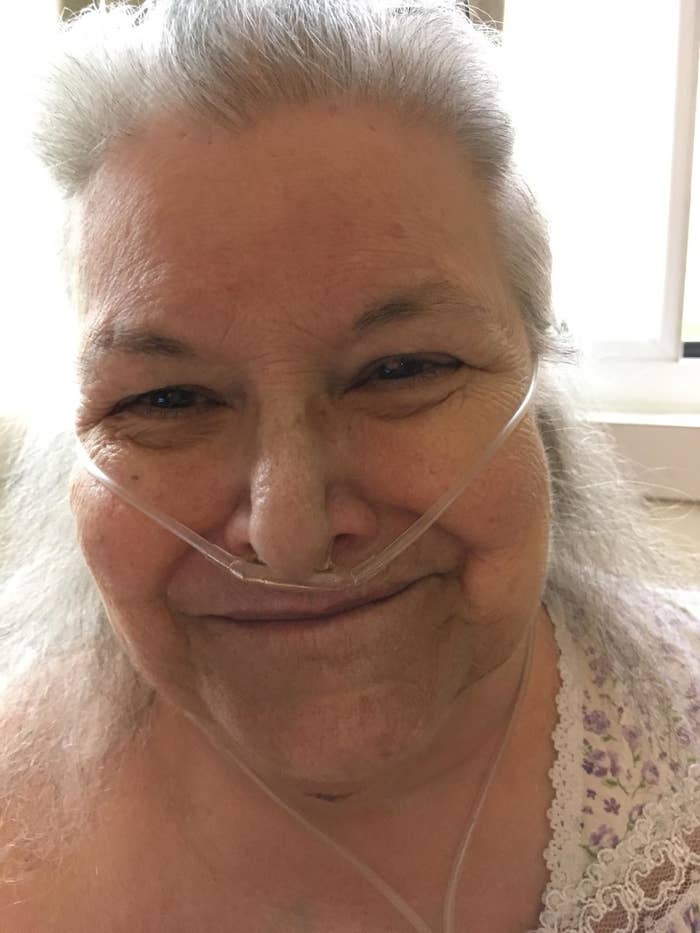
This October, Libby Miller did something she hadn’t done in 20 years — vote in a presidential election.
Miller, 68, has spent the past 10 months in Brandywine Hall, a long-term care facility in West Chester, Pennsylvania, where at least 30 residents have died from COVID-19. She was one of the record 2.6 million Pennsylvanians who, largely spurred by the pandemic, decided to vote by mail this year — votes that have overwhelmingly favored President-elect Joe Biden, helping him secure victory in the key battleground state.
“I used to vote in every election, and then I had heart failure and it was never easy for me because they didn't have any real handicap setup,” said Miller, who had not voted for a president since George W. Bush in 2000. “I couldn't stand in line for a long period and I never thought about doing an absentee, and when I did, it was always too late to do it and the timelines never worked.”

Miller and other Pennsylvanians told BuzzFeed News that the convenience of mail-in voting convinced them to cast a ballot in the 2020 election, despite health problems and busy schedules. Many hadn’t voted in more than a decade.
BuzzFeed News analyzed the Pennsylvania Department of State’s voter file to identify people who had submitted mail-in ballots for this election (as of Nov. 2) but who did not have any type of vote recorded for the past three presidential elections, despite being registered. More than 138,000 people fit this pattern. Due to the way Pennsylvania publishes the data, however, that number may also include people who moved between counties or states since 2008.
In October 2019, Pennsylvania made several changes to its mail-in voting laws. The state stopped requiring voters to provide a reason for requesting an absentee ballot, and it began allowing voters to mail their ballots earlier than ever. Then, in July 2020, the state made mail-in voting even easier: Ballots would come with prepaid return envelopes, so that voters didn’t need to use their own stamps.
This month’s election was the first national election that those rules affected and they seem to have reengaged voters that might otherwise have abstained. Miller said that she learned about the mail-in option on television and that requesting her ballot was as easy as a phone call.
Wayne Williams, 67 and a retired Vietnam War veteran, hadn’t voted in a presidential election since 2004. This year, he was worried about going to the polls during the pandemic because of disabilities caused by exposure to Agent Orange. But the new ease of mail-in voting and his extreme displeasure with the president changed things.
“I didn't like Trump,” Williams said about his motivation. “I didn't like him lying. I didn't like him being such a narcissist. He wasn't for the veterans, whether the veterans think so or not.”
For other voters, being able to mail a ballot gave them a chance to vote at a more convenient time.
Megan Henry, a 37-year-old biotech from Berks County, said she had not voted in a presidential election since 2008 because she works 16-hour shifts. The polls open at the same time she leaves for work.
“I probably shouldn’t say this, but it's not important enough for me to take time off of work, especially by November when I don't have that much time off left at the end of the year,” Henry told BuzzFeed News.
While she wouldn’t say who she voted for in 2020, she said the process was “extremely easy and convenient.”
“They just made mail-in balloting so convenient, and I didn't realize that it was an option before,” Henry said. “That was the main reason I voted.”
Henry said she doesn’t understand why there is “such a bad rap about voting by mail.”
President Donald Trump’s campaign and the Republican Party have fought against mail-in balloting for months. Both before and after the election, the Trump campaign and Republican National Committee have filed lawsuits challenging mail-in voting in several states, including Pennsylvania, with minimal success.
The president has baselessly tweeted about Pennsylvania votes being fraudulent and has sought to undermine the legitimacy of votes counted after Election Day, despite the fact that county officials were not allowed to start counting mail-in ballots before then under state law, delaying the results.
The delay in counting also frustrates the people who cast those ballots.
“I like the mail-in option,” said Ryan Coudriet, a 42-year-old construction manager from Chester County who said he had never voted before in a presidential election. “The only thing I feel would be beneficial is that the way Pennsylvania would change the [law] so it could start the count a little earlier like other states.”
Coudriet said that, before 2020, he didn’t think his vote would make a difference, but that he decided to vote in this election because he was disappointed in where Republican leadership was taking the country. “That was my main reason: that it was so badly run that I had to vote.”
Coudriet and Libby Miller both live in Chester County, where voters cast more than 309,000 ballots in this election — the most ever. Biden received about 58% of those votes, substantially better than the 53% Hillary Clinton got in 2016.
Miller recovered from COVID-19 and is hoping that someone can get the pandemic under control so that, someday, she’ll be able to go home.
“It really meant a lot to me to vote in this one because I wanted someone to really respond to the COVID problem, and I thought Biden would respond more responsibly than Trump,” she said.
